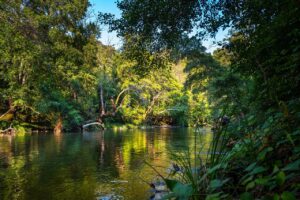Biodiversity is a vital component of our planet’s health and resilience, supporting various ecosystems, providing numerous resources, and ultimately shaping our very existence. As we witness the alarming rate of biodiversity loss due to human activities, it is essential for each of us to understand how we, as individuals, can contribute to preserving this precious web of life. In this article, we will explore practical ways in which we can actively engage in protecting and preserving biodiversity, ensuring a sustainable future for generations to come.
Reduce, Reuse, and Recycle
Reduce consumption
Reducing our consumption is a simple yet effective way to contribute to the conservation of biodiversity. By consciously making an effort to reduce our consumption of resources, such as water, energy, and materials, we can minimize our ecological footprint and protect natural habitats. This can be achieved by adopting sustainable practices like using reusable bags, buying products with minimal packaging, and opting for eco-friendly alternatives whenever possible. By cutting down on unnecessary purchases, we not only contribute to biodiversity preservation but also save money and promote a sustainable lifestyle.
Reuse materials
The second step in the mantra of “Reduce, Reuse, and Recycle” is to embrace the concept of reusing materials. Instead of throwing away items that could still serve a purpose, we can find ways to reuse them creatively. For example, glass jars can be repurposed as storage containers, old clothing can be upcycled into new fashion pieces, and scrap paper can be used for notes or crafts. By giving these items a second life, we reduce the demand for new resources, thereby reducing the ecological strain on biodiversity. Utilizing reusable items and passing on unwanted but usable goods to others through donations or swap events also helps in reducing waste and conserving valuable resources.
Recycle waste
The last component of the “Reduce, Reuse, and Recycle” approach is recycling waste. Recycling involves processing used materials into new products, diverting them from landfills and reducing the extraction of raw materials. By segregating our waste and ensuring that recyclable materials like paper, plastic, and glass end up in the recycling bin, we contribute to the conservation of biodiversity. Recycling helps conserve energy, reduce pollution, and decrease the demand for extracting natural resources. It is important to check local recycling guidelines and support recycling initiatives in order to maximize the impact of our recycling efforts and help protect the delicate balance of ecosystems.
Conserve Water
Fix leaks
Water, a precious resource, is essential for the survival and flourishing of various forms of life. One way we can help preserve biodiversity is by conserving water in our daily lives. A crucial step in this process is fixing leaks. A dripping faucet or a leaking pipe may seem insignificant, but even small leaks can waste a significant amount of water over time. By promptly repairing any leaks in our homes or reporting them to the appropriate authorities, we not only save water but also prevent the depletion of freshwater sources that are vital for countless organisms. Conserving water through leak prevention is a simple action that can have a big impact on maintaining the delicate balance of aquatic ecosystems.
Use water-efficient appliances
Another way to conserve water is by using water-efficient appliances in our homes. Appliances such as dishwashers, washing machines, and toilets have evolved in recent years to become more water-efficient. These appliances use less water per cycle, reducing the overall consumption of water in our households. By choosing water-efficient models when purchasing or upgrading our appliances, we can significantly reduce our water usage and contribute to biodiversity preservation. Conserving water at home not only benefits the environment but also reduces water bills, making it a win-win situation for both our wallets and the planet.
Collect rainwater
Collecting rainwater is a sustainable practice that allows us to make the most of nature’s gift. By capturing and storing rainwater, we can reduce our reliance on potable water sources for activities like watering plants, washing cars, or cleaning outdoor spaces. Rainwater harvesting techniques can range from simple strategies like using a rain barrel to more complex systems that involve storage tanks and filtration methods. By utilizing rainwater, we not only conserve water but also reduce the burden on water treatment facilities and help maintain healthy ecosystems by preserving natural water sources. Collecting rainwater is a practical and eco-friendly way to contribute to biodiversity preservation while ensuring a sustainable water supply for both humans and wildlife.
Sustainable Agriculture
Choose organic products
The choices we make as consumers can directly impact biodiversity, and one area where we can make a difference is through our food choices. By opting for organic products, we support farming practices that prioritize the protection of biodiversity. Organic farming avoids the use of synthetic pesticides, herbicides, and genetically modified organisms, thereby minimizing harm to ecosystems and promoting healthier and more sustainable food production. By choosing organic fruits, vegetables, and grains, we contribute to preserving biodiversity by supporting farming practices that are aligned with nature and reduce the negative impact on wildlife habitats and ecosystems.
Support local farmers
Supporting local farmers is not only beneficial for the economy but also plays a significant role in biodiversity preservation. By purchasing produce, dairy products, and meat from local farmers, we reduce the environmental impact of our food choices. Locally sourced food items require fewer transportation miles, resulting in lower greenhouse gas emissions and energy consumption. Additionally, supporting local farmers helps maintain genetic diversity in crops and livestock, as small-scale farmers often cultivate traditional varieties and breeds that are better adapted to local environments. This diversity is crucial for the resilience and long-term viability of agricultural systems and the preservation of biodiversity.
Practice crop rotation
Crop rotation is an agricultural technique that involves growing different crops in a specific sequence on the same piece of land. This practice helps improve soil fertility, reduce pests and diseases, and minimize the need for synthetic fertilizers and pesticides. By practicing crop rotation, farmers can maintain a healthy balance in soil nutrients, enhance biodiversity in agricultural landscapes, and reduce the negative impacts of intensive monoculture farming. Crop rotation also helps break the life cycles of pests, reducing the need for chemical pest control methods. By supporting farmers who practice crop rotation, we contribute to sustainable agriculture and the preservation of biodiversity, ensuring the long-term health of both the environment and our food systems.
Plant Native Species
Create a native garden
Planting native species in our gardens and outdoor spaces is a fantastic way to promote biodiversity and support local ecosystems. Native plants are naturally adapted to the local climate, soil conditions, and wildlife, providing food and habitat for a variety of native insects, birds, and other animals. By cultivating a garden with native plants, we create a welcoming environment for pollinators like bees and butterflies, which play a crucial role in maintaining diverse plant populations. Additionally, native plants require fewer resources such as water and fertilizer, making them more resilient and sustainable. Establishing a native garden not only adds beauty to our surroundings but also contributes to the protection of local biodiversity.
Participate in reforestation projects
Reforestation is a vital initiative to combat deforestation and promote biodiversity conservation. By participating in reforestation projects, whether through organized tree-planting events or supporting local conservation organizations, we contribute to the restoration of natural habitats. Reforestation projects help offset carbon emissions, improve air and water quality, and provide habitat for a wide range of native species. By planting trees, we create corridors for wildlife movement, restore degraded ecosystems, and enhance the overall ecological balance. Whether it’s joining a local project or simply planting a tree in our own backyard, each effort towards reforestation and habitat restoration has a positive impact on preserving biodiversity for future generations.
Support local nurseries
Supporting local nurseries is not only beneficial for gardeners but also for biodiversity preservation. Local nurseries often specialize in native plant species, and by purchasing plants from these nurseries, we encourage the cultivation and availability of native plant varieties. Native plants support local ecosystems by providing food and habitat for wildlife, conserving water, and reducing the need for chemical inputs. Additionally, local nurseries are more likely to have plants that are adapted to local conditions, ensuring their success in our gardens. By choosing native plants from local nurseries, we contribute to the preservation of biodiversity and foster a sustainable and resilient environment.
Protect Natural Habitats
Preserve forests and wetlands
Forests and wetlands are among the most biodiverse ecosystems on Earth, providing shelter, food, and breeding grounds for countless species. Protecting these natural habitats is crucial for biodiversity preservation. Forests act as carbon sinks, regulating climate patterns and providing habitat for a wide range of plants and animals. Wetlands, on the other hand, help improve water quality, control floods, and support diverse aquatic and terrestrial species. By advocating for the preservation of forests and wetlands, supporting conservation efforts, and opposing destructive practices like deforestation and wetland drainage, we contribute to maintaining the delicate balance of these vital habitats. Through collective action, we can ensure the protection of these natural treasures for the benefit of present and future generations.
Support protected areas
Protected areas, such as national parks, wildlife sanctuaries, and marine reserves, play a fundamental role in conserving biodiversity. These areas serve as refuges for countless plant and animal species, safeguarding their habitats from destructive human activities. By supporting protected areas through donations, volunteering, or advocating for their expansion and effective management, we contribute to the preservation of essential habitats and the protection of vulnerable species. By valuing protected areas as important natural assets and promoting their significance to others, we can ensure the long-term survival of ecosystems and the biodiversity they support.
Avoid invasive species
Invasive species are non-native plants, animals, or microorganisms that establish themselves in new environments and disrupt the balance of native ecosystems. They often outcompete native species for resources and can cause significant harm to biodiversity. To protect natural habitats and preserve biodiversity, it is important to avoid introducing invasive species intentionally or inadvertently. This can be done by learning about local invasive species and their characteristics, choosing native plants for our gardens, and properly disposing of non-native species. By taking these proactive measures and raising awareness about the risks associated with invasive species, we can play a crucial role in preserving the integrity and diversity of natural habitats.
Reduce Chemical Usage
Use natural pesticides
Chemical pesticides are commonly used to control pests and diseases in gardens and agricultural systems, but their overuse can have detrimental effects on biodiversity. To reduce our reliance on harmful chemicals, we can opt for natural alternatives. Natural pesticides, derived from plant extracts or other organic sources, can effectively combat pests while minimizing the negative impact on beneficial insects, animals, and the surrounding environment. By choosing natural pesticides and practicing integrated pest management, we encourage biodiversity-friendly practices and contribute to the preservation of beneficial insects and ecosystems.
Limit fertilizer application
Excessive use of synthetic fertilizers can contaminate water bodies, degrade soil health, and harm biodiversity. To minimize the negative impact of fertilizers, it is important to use them judiciously and adopt sustainable farming practices. This can include conducting soil tests to determine the nutrient requirements of crops, using organic fertilizers instead of synthetic ones, and practicing precision agriculture techniques to optimize nutrient application. By reducing fertilizer application to only what is necessary, we safeguard the health of local ecosystems, prevent nutrient runoff into water bodies, and help preserve biodiversity by maintaining a balanced and natural environment.
Choose eco-friendly cleaning products
The use of chemical cleaning products in our homes can lead to pollution of water bodies and harm to aquatic life. To minimize this impact, it is advisable to choose eco-friendly cleaning products that are biodegradable, non-toxic, and free from harsh chemicals. These products often use plant-based ingredients and natural cleaning agents that are safer for the environment. By opting for eco-friendly cleaning products, we can reduce the release of harmful substances into the ecosystem, support sustainable manufacturing practices, and contribute to the preservation of biodiversity in our waterways.
Promote Sustainable Fishing
Follow fishing regulations
Overfishing has had a devastating impact on marine ecosystems, leading to the depletion of fish populations and loss of biodiversity. To promote sustainable fishing practices and protect aquatic ecosystems, it is crucial to follow fishing regulations and support responsible fishing. This includes adhering to fishing quotas, respecting minimum size limits, and avoiding prohibited areas and seasons for fishing. By being knowledgeable about fishing regulations and practicing responsible fishing, we can contribute to the preservation and recovery of fish stocks, allowing marine ecosystems to thrive and maintain their delicate balance.
Support sustainable seafood
Consumers have the power to drive change in the fishing industry by making informed choices about the seafood they consume. By supporting sustainable seafood options, such as those certified by credible third-party organizations like the Marine Stewardship Council (MSC) or the Aquaculture Stewardship Council (ASC), we encourage responsible fishing practices. Sustainable seafood is sourced from well-managed fisheries or responsible aquaculture operations that take into account the environmental impact, fish stock sustainability, and the livelihoods of fishing communities. By selecting sustainable seafood, we can contribute to the preservation of marine biodiversity and promote the long-term health of our oceans.
Avoid overfished species
Certain fish species are at risk of overfishing due to high demand and unsustainable fishing practices. To contribute to biodiversity preservation, it is important to avoid consuming these overfished species. Education and awareness are vital in understanding which species are currently overexploited and which alternatives are sustainable. By choosing alternative seafood options and supporting fish species that are not under threat, we help reduce the pressure on vulnerable marine ecosystems, allowing them to recover and thrive. Responsible choices regarding seafood consumption can make a significant difference in protecting the intricate web of life in our oceans.
Raise Awareness
Educate others about biodiversity
Raising awareness about the importance of biodiversity and the threats it faces is essential in mobilizing collective action and fostering a culture of preservation. By educating others about biodiversity, we can inspire individuals, communities, and decision-makers to take steps towards its protection. This can be done through sharing information, organizing seminars or workshops, and utilizing various communication channels such as social media and local publications. By highlighting the value of biodiversity, the services it provides, and the actions individuals can take, we can contribute to building a more informed and engaged society that actively participates in the preservation of biodiversity.
Join environmental organizations
Environmental organizations play a crucial role in advocating for biodiversity preservation and implementing conservation initiatives. By joining such organizations, we can support their efforts in protecting ecosystems, preserving endangered species, and promoting sustainable practices. These organizations often organize events, campaigns, and community projects that allow individuals to contribute to conservation efforts directly. Volunteering, participating in citizen science programs, or donating to environmental organizations are some ways we can actively engage in preserving biodiversity and making a difference in the world around us.
Participate in community events
Communities often organize events and activities focused on environmental conservation and biodiversity preservation. By actively participating in these events, we can collaborate with like-minded individuals, share ideas, and work together towards a common goal. Community events can include nature walks, tree-planting campaigns, beach cleanups, and awareness drives. By engaging with our local community, we can amplify our individual efforts and contribute to a collective movement for the preservation of biodiversity. Active participation in community events fosters a sense of responsibility and stewardship for our environment, inspiring others to follow suit and become advocates for biodiversity conservation.
Minimize Light Pollution
Use energy-efficient lighting
Light pollution, the excessive or misdirected artificial lighting in urban areas, can disrupt natural patterns and negatively impact wildlife. To minimize light pollution, it is important to use energy-efficient lighting fixtures and bulbs. Compact fluorescent lamps (CFLs), light-emitting diodes (LEDs), and smart lighting systems are energy-efficient alternatives that reduce the amount of wasted light and overall energy consumption. By using energy-efficient lighting, we can help create dark sky-friendly environments that have less impact on nocturnal animals, reduce energy consumption, and promote the conservation of biodiversity.
Switch off unnecessary lights
Switching off unnecessary lights is a simple yet effective way to minimize light pollution. By turning off lights when they are not needed, both indoors and outdoors, we can reduce the amount of artificial light entering the night sky. This allows nocturnal wildlife to carry out their natural behaviors, minimizes disruption to migration patterns, and preserves the integrity of natural habitats. By being mindful of our lighting usage and making a conscious effort to reduce light pollution, we contribute to the overall well-being of ecosystems and help maintain the delicate balance of nature.
Advocate for dark sky initiatives
Advocating for dark sky initiatives is a proactive way to contribute to the preservation of the night sky and biodiversity. Dark sky initiatives aim to reduce light pollution and protect natural darkness by implementing policies and guidelines for outdoor lighting. Supporting and advocating for the adoption of dark sky ordinances, encouraging the use of shielded lighting fixtures that direct light downward, and participating in community campaigns can all make a significant impact. By advocating for dark sky initiatives, we promote awareness about light pollution and its impacts, promote the preservation of natural habitats, and ensure that future generations have the opportunity to experience the beauty of a star-filled sky.
Practice Responsible Travel
Choose eco-friendly accommodations
When traveling, choosing eco-friendly accommodations is a great way to minimize our impact on biodiversity. Eco-friendly accommodations prioritize sustainability by implementing practices that reduce energy consumption, conserve water, and minimize waste generation. These accommodations often incorporate renewable energy sources, encourage responsible tourism activities, and support local conservation initiatives. By selecting eco-friendly accommodations, we support businesses that prioritize the well-being of the environment and contribute to the preservation of biodiversity in the areas we visit.
Minimize carbon footprint
Minimizing our carbon footprint is essential in combating climate change and protecting biodiversity. One of the biggest contributors to carbon emissions is transportation. To minimize our carbon footprint while traveling, we can opt for greener transportation alternatives, such as public transportation, cycling, or walking, whenever feasible. If flying is unavoidable, we can consider purchasing carbon offsets to compensate for the emissions generated during air travel. Additionally, practicing energy conservation in accommodations, being mindful of water usage, and supporting local, sustainable businesses can further reduce our impact and contribute to the preservation of biodiversity.
Respect local wildlife
Respecting local wildlife is crucial when engaging in outdoor activities and while visiting natural habitats. When observing wildlife, it is important to keep a safe distance and avoid disturbing their natural behaviors. Feeding wildlife or attempting to interact with them can disrupt their ecological roles and lead to dependency or aggression. It is vital to follow responsible tourism guidelines, such as staying on designated trails, not littering, and adhering to regulations for protected areas. By respecting local wildlife and their habitats, we help preserve the delicate balance of ecosystems and minimize our impact on biodiversity.
In conclusion, there is a wide range of actions individuals can take to contribute to the preservation of biodiversity. By adopting sustainable practices such as reducing consumption, reusing materials, and recycling waste, we can minimize our ecological footprint and protect natural habitats. Conserving water, supporting sustainable agriculture, and planting native species in our gardens foster a harmonious relationship with nature. Similarly, protecting natural habitats, reducing chemical usage, and promoting sustainable fishing practices help maintain the delicate balance of ecosystems. Raising awareness, minimizing light pollution, practicing responsible travel, and respecting local wildlife all play important roles in biodiversity conservation. By making conscious choices and taking collective action, we can make a positive impact on the preservation of biodiversity for the benefit of present and future generations.




